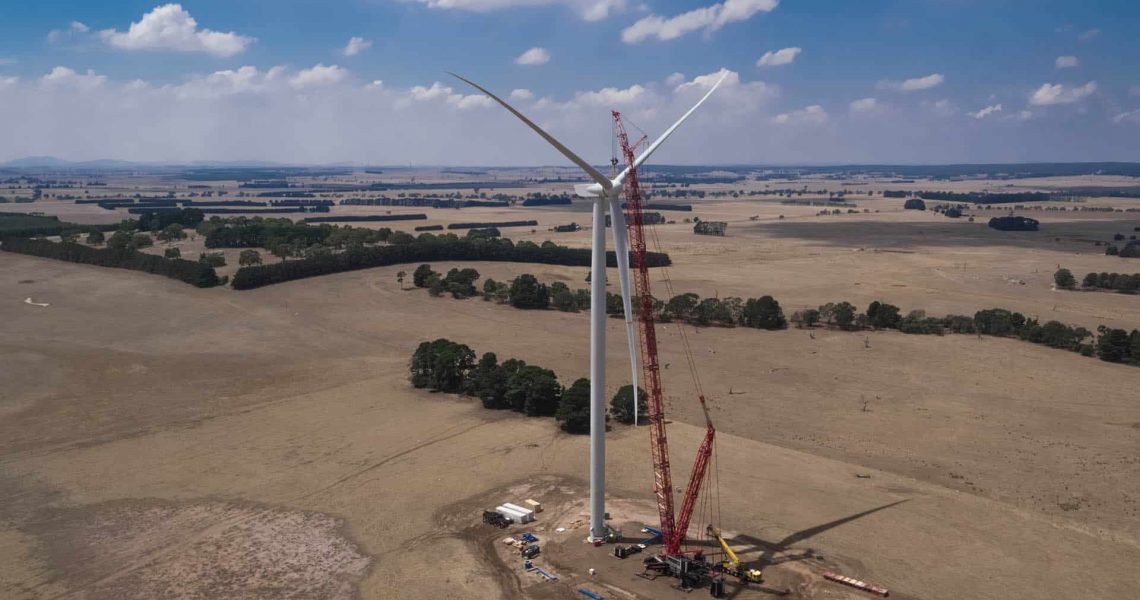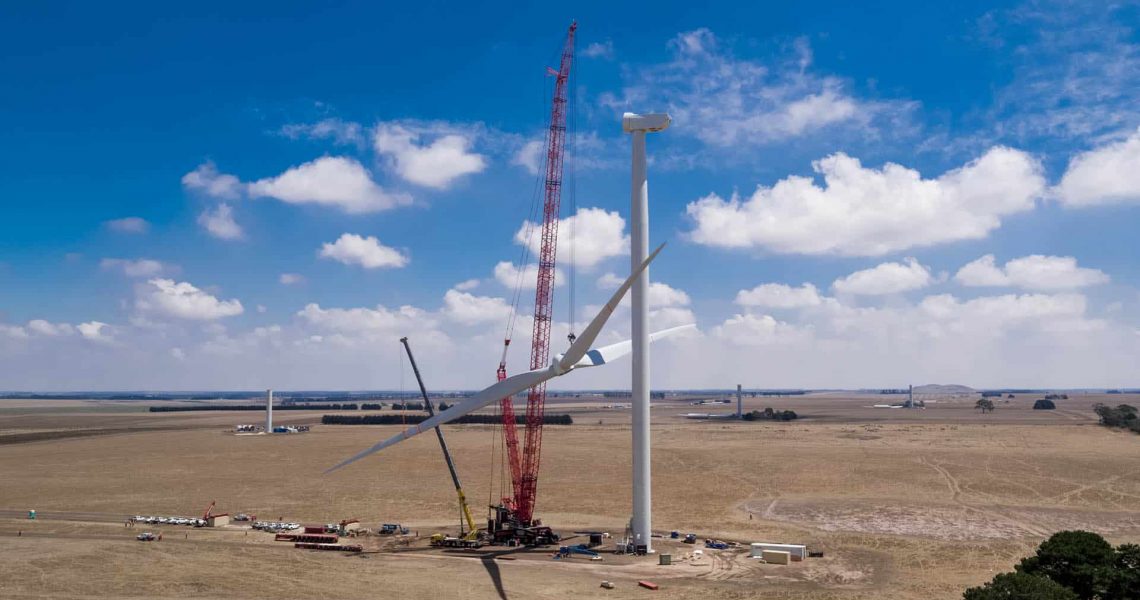The Stockyard Hill Wind Farm continues our push for renewable energy – consisting of 149 turbines and producing up to 530 MW of clean energy.
- SNC-Lavalin WBHO Infrastructure Pty Ltd
Overview
The Stockyard Hill Wind Farm continues our push for renewable energy – consisting of 149 turbines and producing up to 530 MW of clean energy. Located approximately 35 km west of Ballarat, the project commenced construction in May 2018 and when complete will provide power to approximately 390,000 homes.
With the project providing some 300 jobs during construction, Beveridge Williams’ experienced surveyors provide services pertaining to the construction of the turbines inclusive of the setting control points, set out of foundations, high accuracy surveys for bolts and elevations, and civil construction surveys for access roads and drainage. Using the latest Leica survey equipment our Ballarat surveyors were able to resource and deploy as many as three one-person survey teams to ensure our client maintained their project milestones.
With any windfarm the terrain provides just some of the challenges. The rolling hills and expansive layout of the turbines meant that our surveyors covered many kilometres by foot and 4wd utes. Often being the first workers into the areas, with safety being a primary issue, we were able to successfully provide surveys of the topography of the land, and proposed access roads and electrical corridors.
The turbine is mounted on a tubular tower with a hub-height of not more than 120 metres and an overall maximum height of the wind turbine (to the tip of the rotor blade when vertical) can reach a staggering 180 metres above natural ground level. This impressive structure is all secured by a combination of reinforcement steel, concrete and a ring of 236 holding bolts. Each bolt was meticulously surveyed to 2mm accuracy by using Leica 1” instruments and high accuracy prisms. The PCD of each ring of bolts was then calculated to +-2mm. This was required so that each bolt fits perfectly into the threads of the turbine base.
During early stages of the construction, Beveridge Williams undertook high-precision surveys of some of the critical turbine base components. Steel base-plate sections were assembled off-site and surveyed using a Trimble SX10 Terrestrial Laser Scanner. The resultant 3D point clouds were then carefully examined, and the component form converted to CAD linework for assessment.
Our licenced surveyors have also been instrumental in enabling the delivery of the 68.5m turbine blades. Due to the oversized length of the turbine blades, roads were required to be built and existing boundaries widened to accommodate the turning movements of the heavy haulage vehicles. As a result, various boundary re-establishment surveys along the road network were completed.

